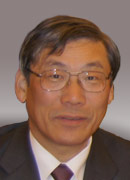| 2015 Message from the President | |
Ryuzo Sakata (Department of Cardiovascular Surgery, |
 |
New Year’s greeting 1. New system for medical specialists Potential problem areas or areas of concern as the specific tasks progress are the formation of groups of specialty training institutions and fixed quotas concerning medical specialists. With regard to groups of specialty training institutions, a number of specific questions have already arisen over which institutions should be core training facilities, and which should be organized into groups as institutions collaborating in training. Different regions have coexisting institutions that each have their own particular histories, and it is common to see the personnel affairs of surgeons in different institutions handled by organizations such as associations of related universities or administrative parent bodies. Securing doctors can be an issue of critical importance in cardiovascular surgery in particular, where numbers of specialists are limited and a certain number of doctors are needed as a team. This makes the risks associated with hospitals handling personnel affairs independently all the greater. Given this situation, integrating groups of institutions that are present in the same geographical region, but that have different pedigrees, to form new groups of specialty training institutions is fraught with difficulties. The important thing in the formation of groups of hospitals is that they not be enclosed within regional boundaries that act as walls to imprison specialists. Rather, training platforms must be broadly based in order to guarantee that specialists draw on resources from outside the region and receive high-quality training. This may require the decision to have groups of facilities coordinated across wider areas, rather than having regional core facilities. However, it does not represent the breakdown of appropriate medical care at the regional level in any way. Each medical facility will secure doctors, specialists will study in other regions for part of the program before returning to continue in their facilities, and specialists will decide their own paths after becoming qualified—in other words, this process will stay the same as it presently is. The difference is that, depending on the inventiveness of the approach, specialists will be able to receive training that is more substantial. Community healthcare will also continue to play a part, as it has done so far, because the various local hospitals will nurture specialists through separate programs that extend beyond the local community. To reiterate, it is essential to create a training system that is, as far as possible, even more substantial than at present, in order to increase the quality of the subspecialty specialist system. Making the system more restrictive for doctors by dwelling on the status of different facilities would be a reversal of priorities. With regard to quotas of specialists, the current recommendation for cardiovascular surgery is one specialist (plus one more) per 500 cardiovascular surgery cases in a group of training facilities per year. However, this figure is extremely optimistic, and if this framework were implemented to its maximum level, the number of specialists would be 1.5 to 2 times higher than the current number, which is scarcely realistic. It is most likely that specialists will flock toward popular programs while less popular programs will be undersubscribed. This is clearly an argument for improving the quality of programs, but I personally feel that specialist quotas should be streamlined a little in order to avoid an excessive concentration of specialists. Our specific tasks to give shape to the system for medical specialists will reach the crucial stage during this year. It is essential that we listen to the views of members while first and foremost planning the system with due heed so that we do not cause confusion in medical care settings. We also need to carry out consistent reform aimed at a better system of medical specialists. 2. The impact factor of GTCS Last fall, I had cause to peruse the history of the Japanese Association for Thoracic Surgery, and I came across the preface to the first issue of the journal Thoracic Surgery. This was written by the first President of the Association, Dr. Kikuo Otsuki from the University of Tokyo. In the preface, Dr. Otsuki touches on the President’s speech from the first Annual Scientific Meeting (the first Thoracic Surgery Seminar) of the Japanese Association for Thoracic Surgery, which was established in 1948. I shall quote his words verbatim because they go to the very essence of the mission of the Association: “All too often, academic societies descend into merrymaking or mudslinging. The Japanese Association for Thoracic Surgery should be a bright, sincere, academic society. It is of the utmost importance for the progress and development of learning that individuals present the results of their work, discuss them without reserve, exchange knowledge, and complement one another. No matter how deep our knowledge or our immersion in the subject, this goal will never be achieved if we are locked in our own shells and pay no heed to others. The need to work with others can be satisfied by an academic society and a journal.” GTCS was first published in English in 1998, when Dr. Hiromi Kurosawa was the Chair of the Editorial Board. I would hazard a guess that Dr. Kurosawa made the decision with a full recognition of the founding mission of the Association. Nowadays, the quality of an academic journal is guaranteed by its impact factor, and our mission must be full commitment to this endeavor. This year, I ask for your special cooperation.
|
|
| 2014 Message from the President |
|
